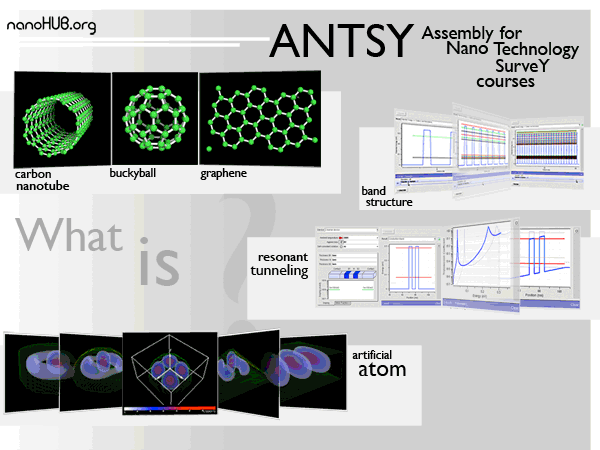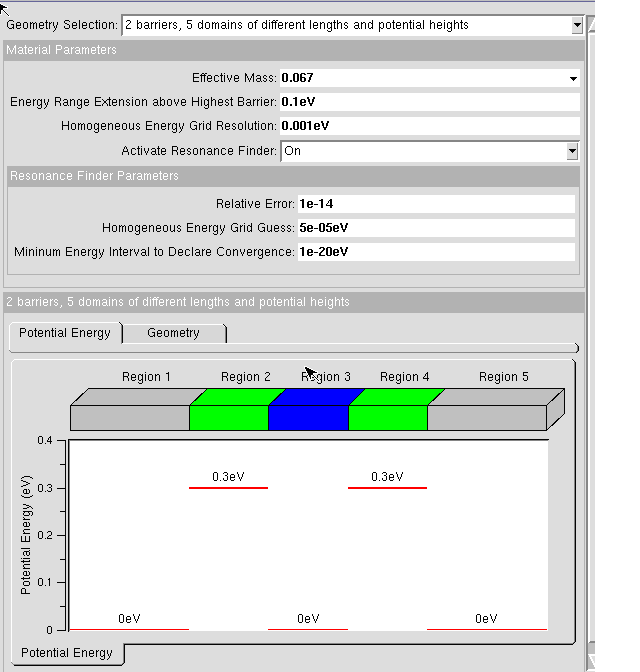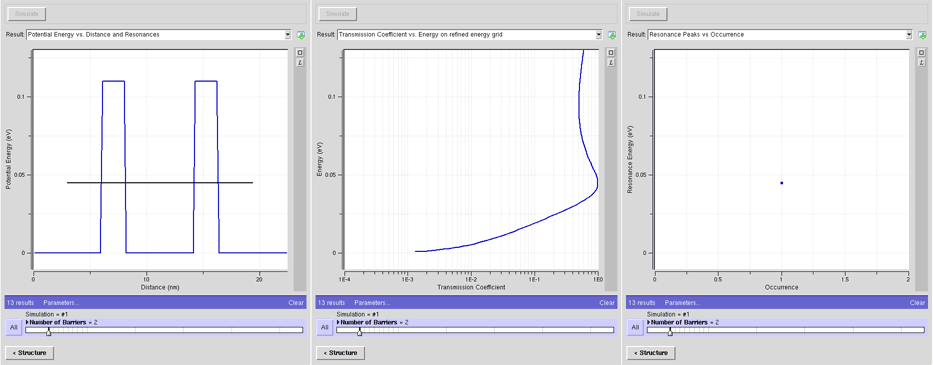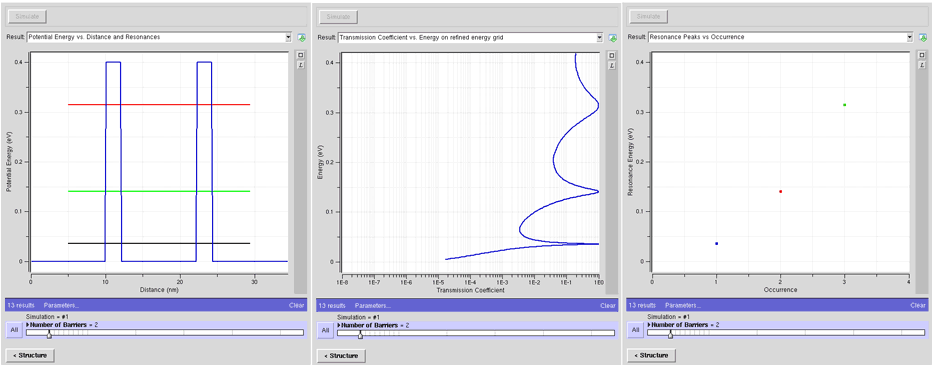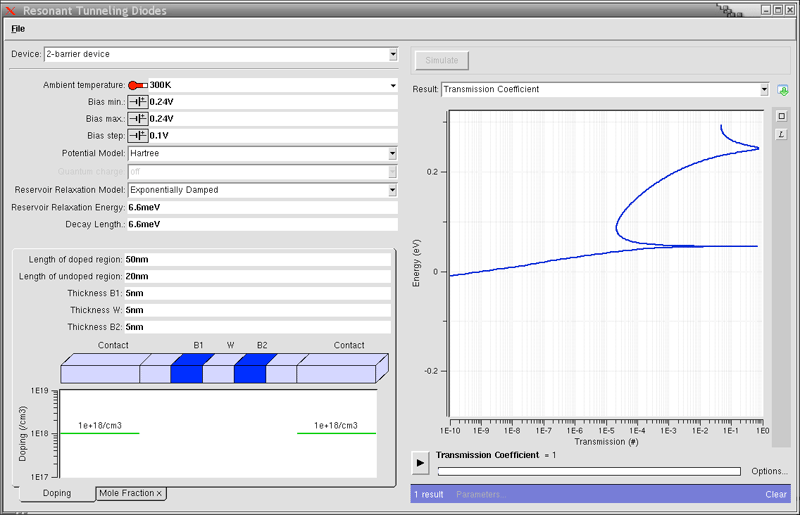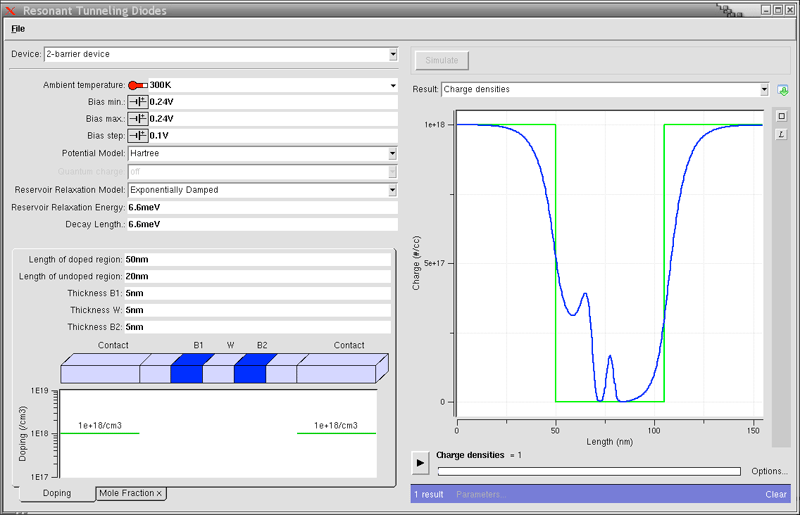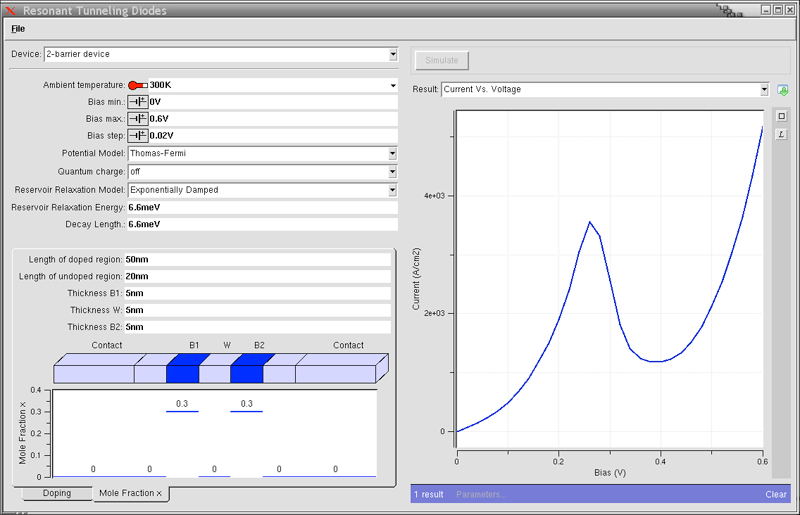ANTSY - Assembly for Nanotechnology Survey Courses
Open Systems – Electron Transport
Piecewise Constant Potential Tool
The Piece-Wise Constant Potential Tool in ANTSY allows users to calculate the transmission and the reflection coefficient of arbitrary five, seven, nine, eleven and 2n-segment piecewise constant potential energy profile. For the case of a multi-well structure, it also calculates the quasi-bound states. Thus the Piecewise Constant Potential Tool can be used as a simple demonstration tool for the formation of energy bands. Other uses include: 1) in the case of stationary perturbation theory, as an exercise to test the validity of the first-order and the second-order correction to the ground state energy of the system due to small perturbations of the confining potential, and 2) as a test of the validity of the Wentzel–Kramers–Brillouin (WKB) approximation for triangular potential barriers.
Exercises:
- Quantum-Mechanical Reflections: an Exercise
- Double-Barrier Case: An Exercise
- From 1 well to 2 wells to 5 wells to periodic potentials: an Exercise
- Energy Bands as a Function of the Geometry of the n-Well Potential: an Exercise
- Cosine Bands: an Exercise for PCPBT
- Quantum-Mechanical Reflections in Nanodevices: an Exercise
- Tunneling Through Triangular Barrier: an Exercise for PCPBT
- Stationary Perturbation Theory: an Exercise for PCPBT
Resonant Tunneling Diode Lab
A barrier placed in the path of electrons will block their flow. If the barrier is too thin, however, the electrons can tunnel through it because of quantum mechanical effects. Furthermore, if two or more thin barriers are placed in close proximity, electrons will bounce between the barriers and, at certain resonant energies, begin to flow through the barriers.
The Resonant Tunneling Diode Lab in ANTSY allows users to experiment with this quantum mechanical phenomenon by controlling the number of barriers and their material properties and then simulate current as a function of bias.
Exercises:
